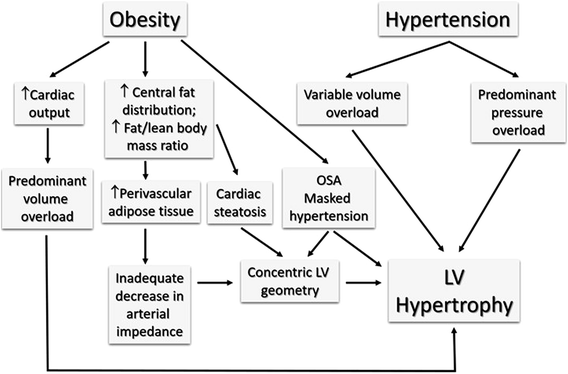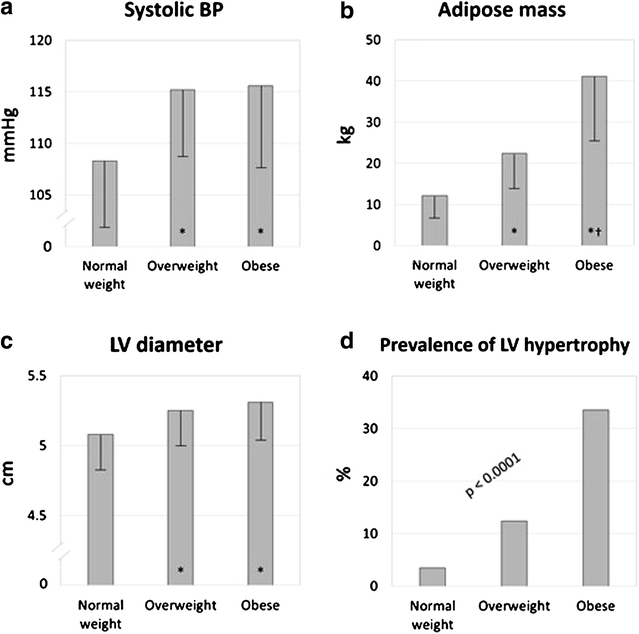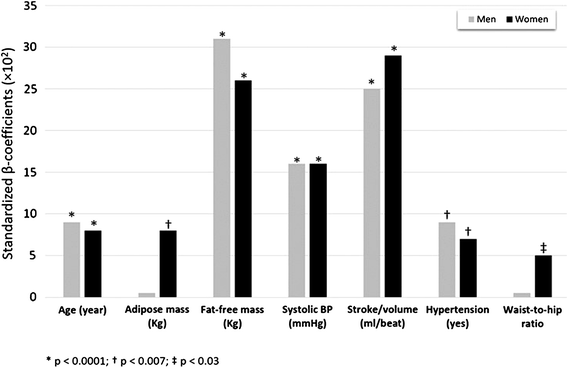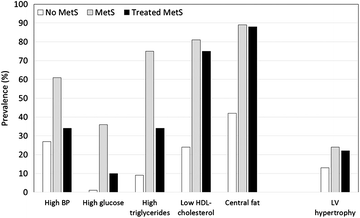Obesity and hypertensive heart disease: focus on body composition and sex differences
- PMID: 27956942
- PMCID: PMC5129668
- DOI: 10.1186/s13098-016-0193-x
Obesity and hypertensive heart disease: focus on body composition and sex differences
Abstract
There is evidence that hypertension is frequently associated with overweight/obesity even in kids and adolescents. Either conditions influence development of left ventricular (LV) hypertrophy (LVH), through different biological and hemodynamic mechanisms: obesity is conventionally thought to elicit a coherent growth of LV chamber dimensions and myocardial wall thickness (eccentric LV geometry), whereas a more accentuated increase in wall-thickness (concentric LV geometry) is attributed to hypertension. While during youth these differences are visible, proportion of LV concentric geometry, the most harmful LV geometric pattern, sharply raises in obese individuals during middle age, and becomes the most frequent geometric patterns among obese-hypertensive individuals. Two conditions with elevated hemodynamic impact, severe obstructive sleep apnea and masked hypertension contribute to the development of such a geometric pattern, but non-hemodynamic factors, and specifically body composition, also influence prevalence of concentric LV geometry. Contrasting a general belief, it has been observed that adipose mass strongly influences LV mass, particularly in women, especially when fat-free mass is relatively deficient. Thus, though blood pressure control is mandatory for prevention and reduction of LVH in obese hypertensive patients, without reduction of visceral adiposity regression of LVH is difficult. Future researches should be addressed on (1) assessing whether LVH resulting from alteration of body composition carries the same prognosis as pressure overload LVH; (2) defining tissue characterization of the hypertrophic heart in obese-hypertensive patients; (3) evaluating whether assessment of hemodynamic loading conditions and biological markers can help defining management of the association of obesity with hypertension.
Keywords: Body composition; Hypertension; Left ventricular mass; Obesity.
Figures




References
-
- Third Report of the National Cholesterol Education Program (NCEP) Expert Panel on Detection, Evaluation, and Treatment of High Blood Cholesterol in Adults (Adult Treatment Panel III) final report. Circulation. 2002;106:3143–3421. - PubMed
Publication types
LinkOut - more resources
Full Text Sources
Other Literature Sources

